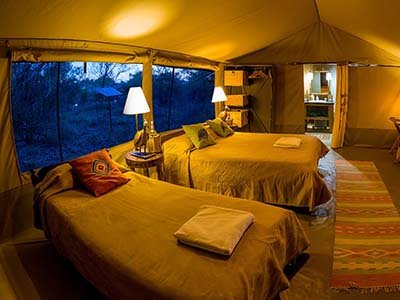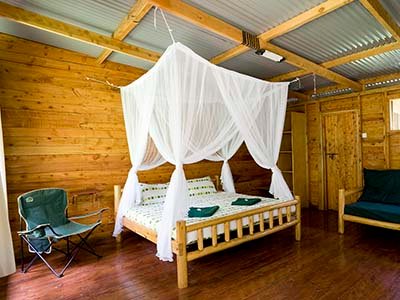Gombe National Park
Gombe National Park is located in western Tanzania on the shores of Lake Tanganyika, and it spans 13 kilometres from north to south. The park’s total area is 56 square kilometres, plus a 100-meter-wide strip of coastal water. It was first established as a wildlife reserve in 1943 and then as a national park in 1968. Its elevations range from around 773 to over 1,500 meters (Mitumba).
You can’t judge a place by how it seems; just because an old forest looks peaceful doesn’t mean it really is. There’s excitement waiting for you under the tree canopy. While there are many fantastic animals here, one sticks out. We, humans, are genetically most closely related to chimpanzees, so be ready for an exciting meeting with our closest genetic cousin. In spite of Gombe’s relatively small size compared to other Tanzanian national parks, the experience of seeing its illustrious residents more than makes up for it.
The famous conservationist Jane Goodall is largely responsible for elevating the chimpanzees to the status of celebrities thanks to her work with them after they had been fully habituated. Her behavioural research program is the world’s longest-running of its type, having begun well over fifty years ago. The enormous group sizes in Gombe are a draw for scientists; the biggest group, the Kasekela group, consists of at least 40 chimpanzees.
There are eight distinct kinds of monkeys and apes here. Since herbivores and carnivores are uncommon on the Rift Wall and its outskirts, Gombe is a safari-paradise goer for foot travel. Prepare yourself for some amazing encounters when hiking through the park’s deep woodlands, where there are few open spots.
The wild movements and yelps of chimpanzees reveal their genuine selves. We share 98% of our genes, so the moment when members of different species feel a connection to one another can be extraordinary. Although a dominant male’s display of strength can be intimidating, rest assured that no harm is intended. Don’t panic and run away; instead, get really small and quiet.
Chimpanzees are present, but they are only one of eight different species of primates in this area. Keep an eye out for the habituated beachcomber olive baboons, who are the focus of a separate scientific study, as you search the treetops for blue monkeys, red-tailed monkeys, and colobus monkeys. The South African galago (also known as a bushbaby) and the Senegal galago are both nocturnal species.
Don’t ignore the wealth that lies in the sky and the water as well. The African crowned eagle, which hunts monkeys, the iconic fish eagle, three types of kingfishers, and the brilliant Peter’s twinspots are just a few of the more than 200 bird species that frequent the area’s skies.
In addition, the palm-nut vulture, a near-vegetarian species native to Lake Tanganyika, is an interesting specimen. The lake itself is located at the Rift Valley’s foot and is home to around 350 different fish species, the vast majority of which are endemic to the area.
Conditions in Gombe National Park
Daytime highs of 26-30 degrees and lows of 14-17 degrees are typical (night-time).
Midway through May and again from October to November make up the dry season.
There are no seasonal changes in the thick forest during the wet season (November–mid-May, with less rain in January–February).
When to Visit Gombe National Park
The wet season is the best time to visit because of the abundance of vegetation and insects, as well as the increased likelihood of seeing chimpanzees (they tend to stay closer to their habitat during the wet season).
Gombe National Park, like Mahale National Park, is inaccessible except by boat.
Scheduled flights depart from Dar es Salaam and Arusha (private flights organised by safari companies), and you can also take the train from Dar es Salaam or the ferry from Mpulungu in Zambia to reach Kigoma. Alternatively, you could drive there from Dar es Salaam in four days. The first 980 kilometres will be paved, followed by another 780 kilometres on dirt roads (difficult in the wet season).
You can take a lake taxi from Kigoma to Kasekela (which can take up to four hours) or a motorboat (two hours, bookings through the park).
Gombe National Park Lodging
One private tented lodge, a rest house, bandas, and campsites can all be found inside the park (booking for rest house, bandas and campsites through the Park).
Things to do
Trekking, swimming, snorkelling, chimpanzee tracking, and guided hikes along the beach You may travel to Ujiji, which is close to Kigoma, to see where Henry Stanley and David Livingstone had their famous meeting (“Dr Livingstone, I guess”). Alternately, see the famed dhow constructors in action.
Please be aware that there are rules in place to ensure the safety of both you and the chimps. Don’t expect to find them in less than two days, so plan accordingly. Because Gombe is not a zoo, visitors should not expect to have any guaranteed animal encounters there.





